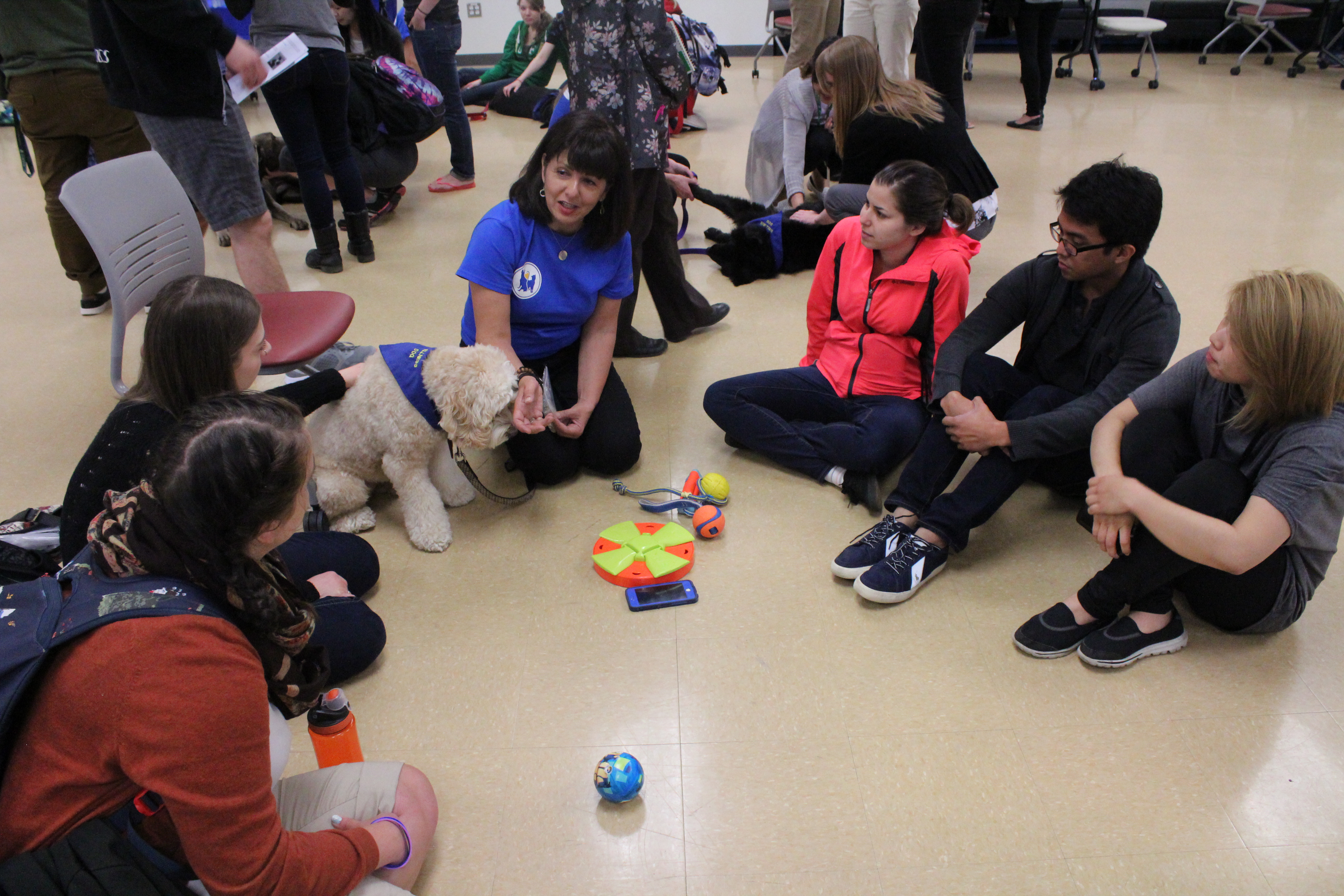
The benefits of animal assisted therapy were on full display at Dog Day.
Everyone knows that dogs can play fetch. But did you know that dogs can be used in rehabilitation? Canines Jasper, Flynn and Macy proved just that at Dog Day today, June 15, hosted by the Faculty of Rehabilitation Medicine's Speech-Language Pathology students in collaboration with students from Occupational Therapy and Physical Therapy, to showcase how animals can be used in rehabilitation.
"Dogs don't just console people, they can also assist therapists in achieving the goals of therapy by helping patients and clients complete exercises as part of their rehabilitation," says Charlotte Smith, first-year MSc Speech-Language Pathology student at the University of Alberta. Smith, alongside five fellow classmates, organized Dog Day as part of their 900 project in the Department of Communication Sciences and Disorders.
Animal assisted therapy (AAT) is currently used in a number of ways, in efforts to help improve clients' social, emotional, physical and/or cognitive functioning. While there hasn't been a lot of research in this area of rehabilitation medicine, there appears to be a lot potential to incorporate AAT into practice. For example, AAT might be used in speech-language pathology with an adult client to encourage communication with the animal directly, or the animal can facilitate conversation between the client and other people.
"I'm very proud of our students for hosting this event and demonstrating how AAT might be used in treatment, be it in physical therapy, occupational therapy or speech-language pathology," says Teresa Paslawski, associate professor, Department of Communication Sciences and Disorders, who is supervising this project.
Students in physical therapy, occupational therapy and speech-language pathology attended the event inside Corbett Hall. Students acted as clients and clinicians in 10-minute mock scenarios where animal assisted therapy could be used. Dog handlers like Linda Shaw were on hand to lead the dogs through each scenario.
But of course, the stars of the event were Flynn, Jasper and Macy, dogs from various AAT certifying agencies such as Chimo Animal Assisted Wellness and Learning Society (CAAWLS) and the Pet Therapy Society of Northern Alberta.
"Flynn is very friendly and likes interacting with people," says Shaw about her Australian Labradoodle. Flynn helped demonstrate how dogs can assist in physical therapy treatments by helping clients gain mobility and strength through accompanying them on walks and playing fetch.
Jasper, a Cavalier King Charles Spaniel, showed the crowd how dogs assist speech-language pathologists in providing therapy that encourages clients to speak louder, or repeat phrases.
Macy, a Labrador, showed how a dog can help an occupational therapist assist an elderly client who has suffered a stroke with hand mobility by gripping a leash or a brush.
"There is some research that demonstrates that people with dementia who interact with animals are less withdrawn and exhibit fewer agitated behaviours," says Smith, who first became interested in working with dogs because her parents have two search and rescue dogs.
The event also featured booths from the Edmonton Humane Society and the Chimo Animal Assisted Wellness and Learning Society (CAAWLS). Members from the organizations spoke about understanding dog behaviour and how to get dogs certified for AAT.
The 'Must Love Dogs' 900 group, as they informally call themselves, hope the event expanded people's perceptions of what dogs are capable of. "As animal assisted therapy is a growing field, we hope that there will be more clinicians interested in using it, and more research exploring its benefits. We hope Dog Day raised awareness around AAT," says Smith.
"The credit for this day really goes to the students - they have taken a lot of initiative and have been extremely positive about this project from the beginning," says Paslawski.